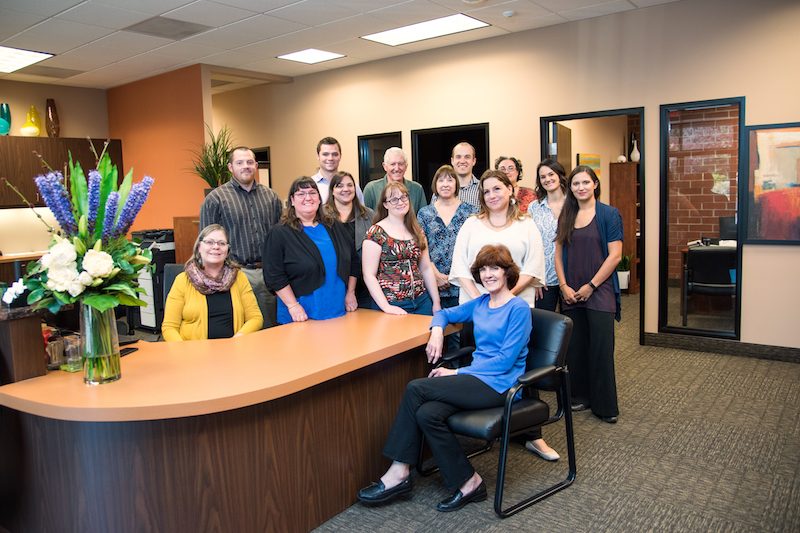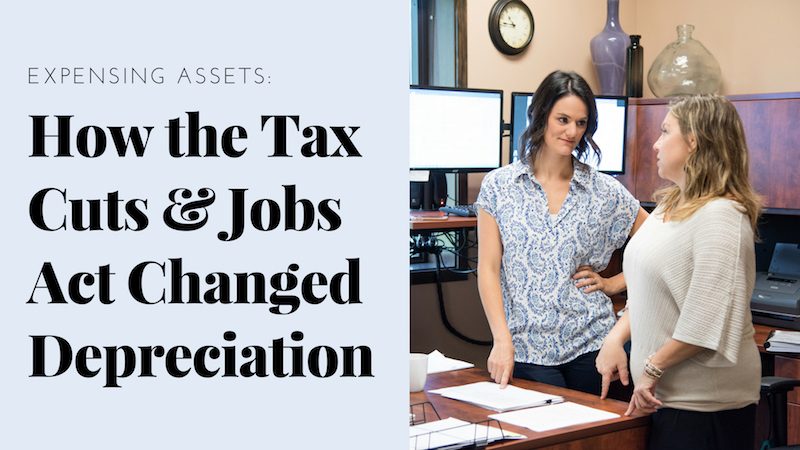At the end of 2017, President Trump implemented the Tax Cuts and Jobs Act – the most extensive tax reform measure in over 30 years. This new legislation means big changes for business owners, but perhaps none quite as impactful as the update to depreciation – that is, the ability to expense 100% of certain assets.
Here at Opsahl Dawson, our team of experienced CPAs loves helping clients understand the implications of this new law. Keep reading to learn how the depreciation update of the Tax Cuts & Jobs Act allows you to expense asset purchases and save money on taxes.
What is depreciation?
Depreciation allows a taxpayer to recover the cost of certain assets used in business. Rather than footing the entire cost of an asset during the first year after acquisition, depreciation allows your business to spread out the cost of the asset over its lifetime and recover the cost.
For the last decade, congress has been actively encouraging business owners to purchase capital assets (those having a life longer than one year and not intended for sale). One way they’ve done this is by offering bonus depreciation.
A crash course in bonus depreciation

Since its introduction in 2001, bonus depreciation has been a valuable tax-saving tool for businesses. Bonus depreciation is a method of accelerated depreciation, allowing your business to take an additional first-year deduction on the purchase of qualified depreciable property.
Prior to the new tax law, bonus depreciation was fairly limited. The main qualifications for bonus depreciation were that the property had to be new and have an asset life of 20 years or less. The law outlined that only 50% of the cost of assets placed in service in 2017 could be bonused, and this was scheduled to be cut back to 40% in 2018.
However, thanks to the new tax law, the old bonus depreciation rules got a big upgrade. Instead of being able to write off only half of the asset, today your business can expense the entire thing.
The bonus depreciation upgrade (the whole pie)
The new tax law made two big changes to bonus depreciation:
- Increased bonus depreciation to 100% for assets placed in service after September 27, 2017
- Qualified used assets are now also available for bonus depreciation
This inclusion of used assets greatly expands your business’ ability to write off assets completely in the year purchased.
However, if you elect bonus on one 5-year asset you must apply bonus to all your 5-year assets. In this way, electing the bonus is like eating an entire pie – you can’t just expense one slice.
Section 179 (just a slice of pie)

Section 179 allows your business to deduct the cost of certain qualifying property. Unlike bonus depreciation, Section 179 offers more flexibility by allowing taxpayers to pick and choose if they’d like just “a slice of the pie” rather than the entire thing.
For example, if you purchase 2 (5-year life) pieces of equipment, you could elect Section 179 on one asset and not the other. This can be beneficial in managing your taxable income and maximize eligibility for the new 20% Qualified Business Income deduction.
Be aware: Section 179 has limitations
Section 179 has some limitations:
- For one, the amount of Section 179 that can be elected in 2018 is subject to a maximum annual deduction of $1 million.
- The $1 million maximum annual deduction will be phased down if total property acquired during the year exceeds the annual threshold of $2.5 million.
- Additionally, the amount of Section 179 taken on your tax return is also limited by taxable income.
Expanding the definition of “qualified assets”
The Tax Cuts and Jobs Act also expanded the definition of what types if assets qualify as eligible for Section 179. The additions to qualified real property now include:
- Personal property used with the furnishings of rental properties
- Improvements to no-residential property, such as
- HVAC property
- Fire protection and alarm systems
- Security systems
- Qualified improvement property (discussed below)
Qualified improvement property – the commercial real-estate investor’s best friend

The new tax law simplifies previous categories of building improvement property and Qualified Leasehold Improvements. Starting with assets placed in service January 1, 2018, there is now just one category. This category is known as Qualified Improvement Property (QIP).
QIP is defined as any improvement made to the interior portion of a non-residential building after the date the building was first placed in service. However, there are a few exclusions:
- Building enlargements
- Elevators and escalators
- Costs attributable to the internal structural framework of a building
QIP is depreciated over a 39-year life and is eligible for Section 179. A qualifying building improvement that used to take over 39 years now has potential to be fully deducted in the year of the improvement.
One thing to note: The original intent for the QIP was to change the class to a 15-year life, but due to a drafting error, it’s still in the code as a 39-year life. As of this article, no technical corrections have been made.
Take advantage of new tax-saving benefits

These new changes are just some of the many implications of the new Tax Cuts & Jobs Act. To make sure you’re fully realizing the benefits and savings available, we recommend strategizing with your CPA here at Opsahl Dawson.
Together, we’ll review your current situation, evaluate potential cost segregation studies, and create the best plan for you and your business.
Ready to get started? Contact us to learn more and analyze how the depreciation upgrade affects your business or commercial property.








Leave A Comment